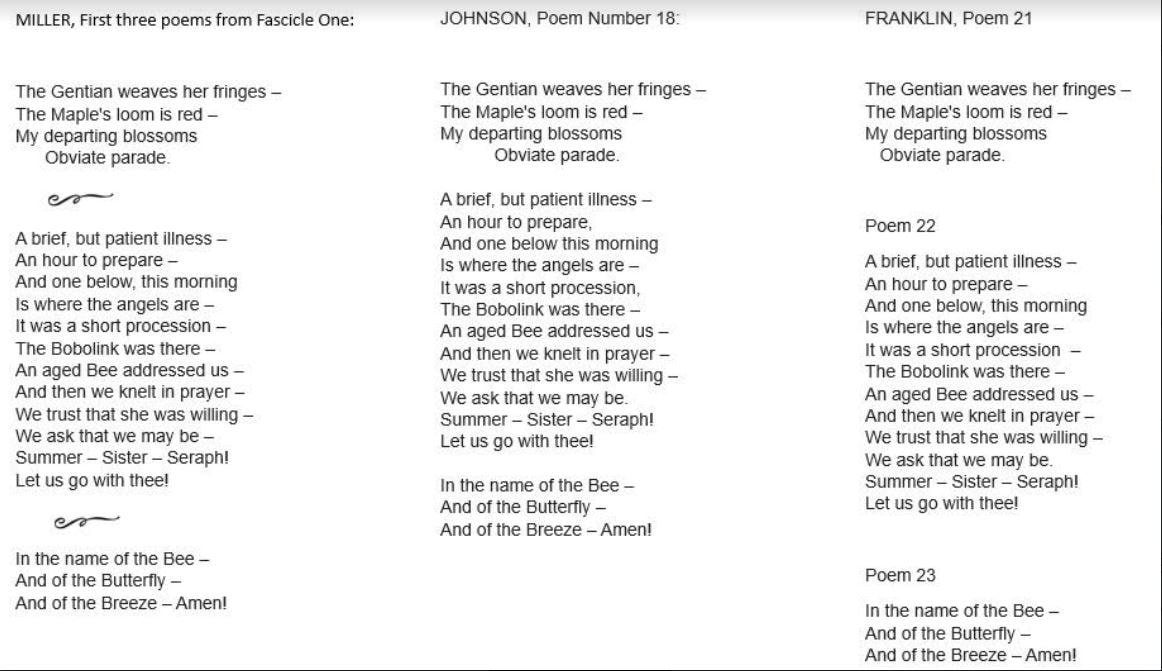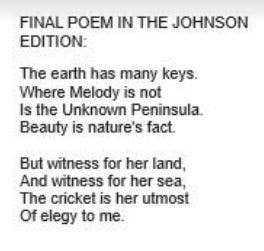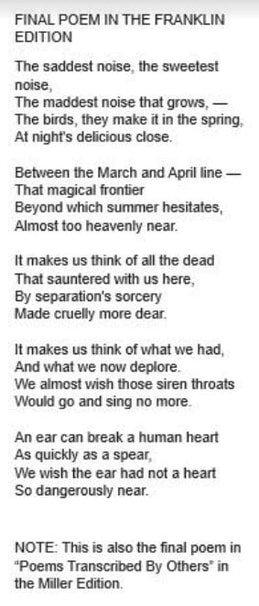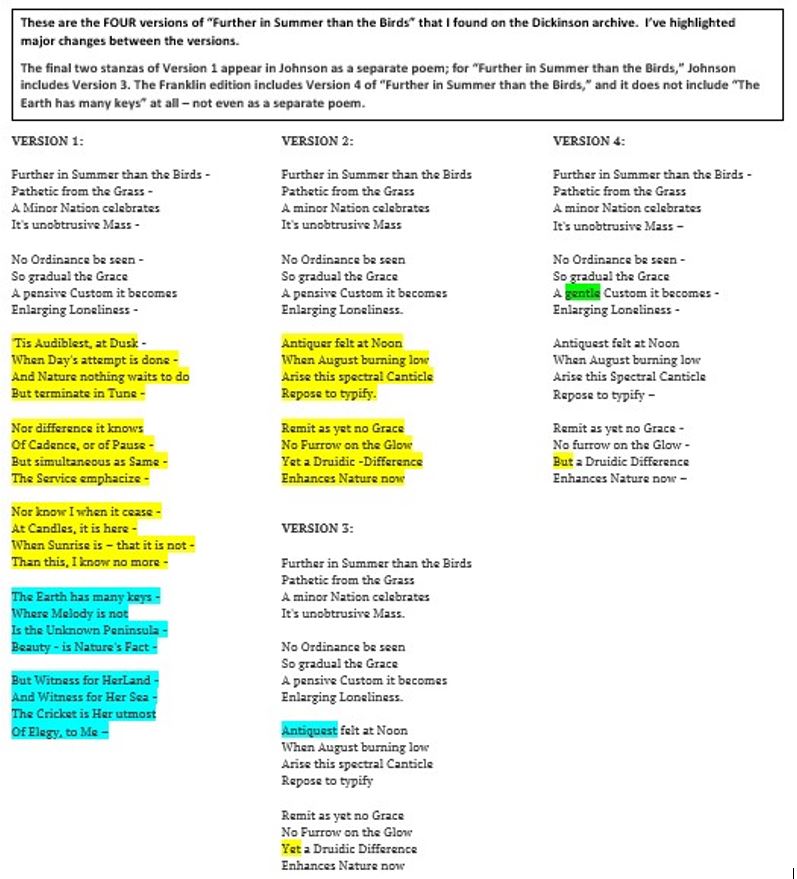The first “complete edition” came out in 1955, edited by Thomas Johnson. The next “complete edition” was published in 1998, edited by R. W. Franklin. Now this new edition edited by Miller came out in 2016.
What are the differences between them?
Here’s what Johnson stated about the order of the poems in his compilation:
“The order of the poems is that of the Harvard (variorum) edition. There, where all copies of poems are reproduced, fair copies to recipients are chosen for principal representation. Thus, in this volume, for instance, the poems sent to T. W. Higginson in 1862 (nos. 318-327) range in date from 1858 to 1862. This seeming irregularity is necessary to preserve the numerical order of the poems.”
Here’s what Franklin said about the ordering in his collection:
“About three fourths of the poems exist in a signal source. For the rest, with from two to seven sources, the policy has been to choose the latest version of the entire poem, thereby giving to the poet, rather than the editor, the ownership of change.”
Cristanne Miller’s collection is called “Emily Dickinson’s Poems As She Preserved Them” – so the poems are grouped in five different categories. First and foremost are the poems Dickinson herself placed in bound booklets (i.e., fascicles) and then the others are categorized as follows: Unbound Sheets, Loose Poems, Poems Trasncribed by Others, and Poems Not Retained.
As a result, what are the first and last poems in each edition?
The first poem in both the Johnson & Franklin editions is “Awake ye muses nine, sing me a strain divine.” In Miller’s edition, this is the first poem in the section called “Poems Not Retained.”
The first poem in Miller’s collection is the first poem from the first booklet (fasicle) bound by Dickinson herself, “The Gentian weaves her fringes.” The next two poems are “A brief, but patient illness” and “In the name of the Bee” – and these three poems together are shown as a single poem in Johnson, number 18. In Franklin, these three poems are displayed as three separate poems, numbers 21, 22, and 23.
From Beginning to End, Part 2:
So what are the final poems in each edition?
The last poem in the Johnson edition, #1775, is “The earth has many keys,” and interestingly, this poem does not appear in the 1998 Franklin edition of “complete” poems.
| Oddly enough, there are at least four extant versions of Dickinson’s poem “Further in summer than the birds,” and ONE of those versions includes these lines as the final two stanzas of that poem. However, both the Johnson and Franklin editions include other, shorter versions of that poem without these lines. I do not see “The earth has many keys” listed in the index of the Miller edition either. I checked Miller’s version of “Further in summer than the birds,” and it did not include the lines from “The earth has many keys.” The final poem in Franklin, #1789, is “The saddest noise, the sweetest noise,” which is listed as #1764 (out of 1775) in Johnson. In Miller’s edition, “The saddest noise, the sweetest noise” is the final poem of the fourth section of the book, “Poems Transcribed by Others” – and it’s the same version that appears in Franklin. |
Hmm...the pic below isn't great -- I was trying to fit it all on one page. Apologies! ; - )




 RSS Feed
RSS Feed
